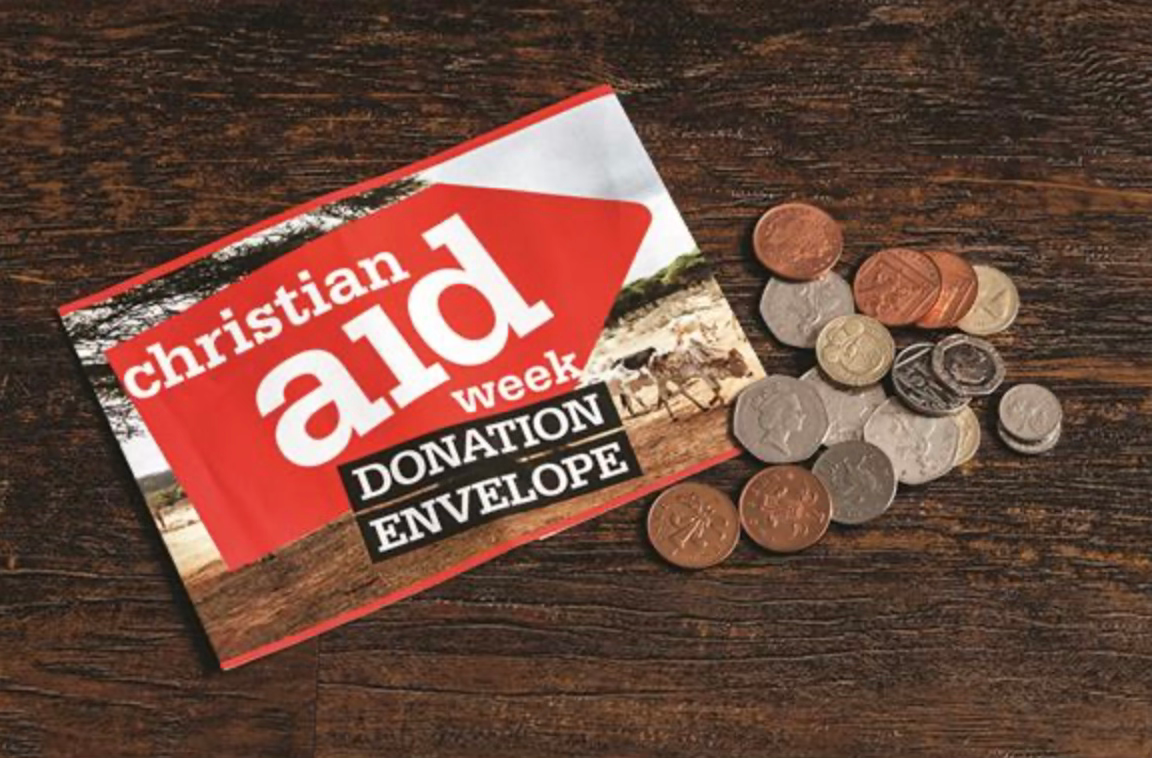Fundraising Doesn't Equal Marketing – What Rory Sutherland’s Test Actually Reveals
Fundraising lives in the messy middle of emotion, trust, and timing where marketing doesn't necessarily operate.
There’s a video that surfaces every now again of marketing guru, Rory Sutherland discussing a test he ran for Christian Aid where his agency tried a number of different ways to try and boost income from door-to-door collection envelopes.
You can read about the test in the introduction of his fantastic book Alchemy, or you can watch one of the videos, like this one here…
But to give you a little more context, every year Christian Aid volunteers deliver envelopes door-to-door and return a week or so later to collect the envelope filled with cash.
In the test, they ran three variations against the control envelope. One was printed on higher-quality paper, one opened at the short end (a different orientation), and one included a Gift Aid form that allowed donors to increase the value of their donation by 25%.
When they analysed the results, the "illogical" tweaks, such as better quality paper or a different orientation increased donations by about 14%. But the one "logical" change, the one that offered the chance to increase the value of the gift through Gift Aid at no cost to the donor, was described as “a disaster”.
It reduced the amount raised by over 30 per cent.
Sutherland, with characteristic intellectual humility, offers a few theories but ultimately concludes, "I’ll be honest with you – I have no idea why this should be."
Now, I love Rory Sutherland. I love his videos. I love his presentations, and, above all, I love the fact he challenges conventional thinking. But with respect to one of my favourite marketing heroes, I can help him out with this one.
The answer can’t be found in a marketing textbook. It’s in the lived, frantic reality of anyone who has ever been on either side of a front door during a charity door-to-door envelope collection.
The Real Job-to-be-Done: Getting back to what you were doing before the doorbell rang.
Sutherland's test assumes the donor is a rational actor who has spent time calmly weighing the financial pros and cons of their gift.
But that’s not what’s happening.
Here’s the real scenario – the doorbell rings. It’s the charity volunteer, back to collect the envelope they dropped off weeks ago. The homeowner has completely forgotten about it. Social pressure mounts. And there is either a quick scramble as a search begins for the envelope amongst take-away flyers or a new envelope is handed over by the volunteer.
At this point, the potential donor likely wants two things:
To be seen as a good, charitable person
To end this social exchange and get back to their evening
The real "job-to-be-done" for the donor in that moment is not "maximize the tax-efficiency of my gift." It is: "Get a respectable amount of cash into this envelope and hand it over as quickly and painlessly as possible."
The control envelope allows for this perfectly. Stuff a fiver in, seal it, hand it over. Job done. The donor feels good, the volunteer feels good, everyone moves on.
Now, introduce the "rational" tax-rebate envelope.
You Didn't Make the Gift Bigger. You Made it Harder.
The instant the donor sees the words "complete a form" and "25 per cent" the job-to-be-done changes.
It is no longer a simple, emotional act of giving. It is now an administrative task.
It requires finding a pen. It requires finding your glasses. It requires filling in your name, your address, your postcode. It requires cognitive load, concentration, and, most importantly, time.
You have just introduced a massive amount of friction into what was a frictionless social transaction. And in the face of friction, the easiest path for a human being is almost always avoidance. It’s easier to say "Oh, so sorry, I don't have anything right now" than it is to start filling out paperwork whilst a stranger waits on your doorstep.
The appeal didn't fail because the logic was wrong. It failed because it ignored the human context.
The Second, Deeper Reason: The Trust Transaction
But there's an even more powerful force at play here – trust.
When you ask a donor to fill in a form, you are no longer just asking for money. You are asking for their data. And data is a far more personal, far more valuable gift than the £5 in their pocket.
Giving their details means:
Entering a system.
Anticipating future contact.
Trusting an organisation they have a fleeting, low-consideration relationship with not to misuse their information or add them to their mailing list.
The anonymous cash gift is a clean, simple, low-risk transaction. It is a one-time act of generosity with no strings attached.
The gift with a form is a commitment. It’s the start of a relationship they may not want. For a charity they don't know and may not fully trust, that is a higher price to pay. They would rather you get £5 of their money than you get their name and address.
What’s the lesson?
So, Rory, the answer to your puzzle is simple. Your "rational" appeal failed because it was only rational on paper. In the real, messy, human world, you made the donation harder, more time-consuming, and you asked for a second gift – the gift of data and trust – that the donor was not necessarily ready to give.
For fundraisers, the takeaway is clear: before you try to be clever, try to be human.
Understand the actual context in which your audience experiences your ask. Think about how you can make giving more rewarding, or more emotionally satisfying. Not just more efficient.
Friction isn’t always bad. But if you’re going to introduce it, make sure it’s worth it.
That’s how you become a better fundraiser – not just by applying logic, but by understanding people and the fact we simply are not logical beings.




